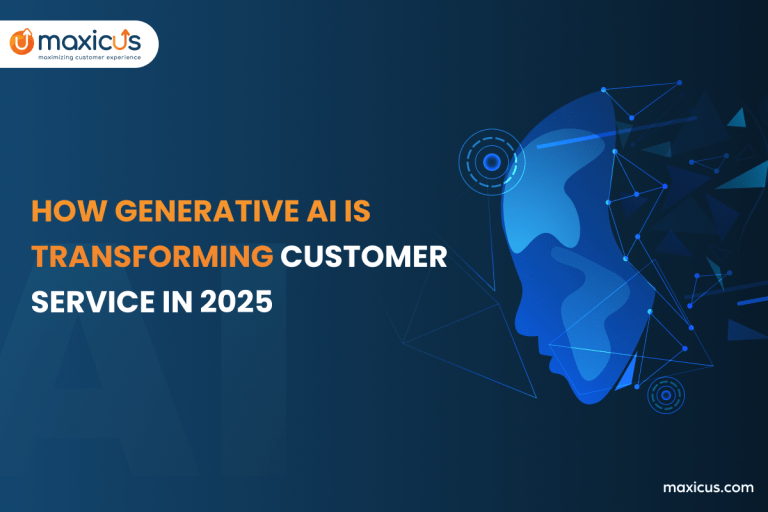Addressing the Needs of Your Customers with a Virtual Shopping Experience
The advent of online shopping has allowed consumers to have more options in shopping for the products they need. However, the more options, the greater the lack of attention. Irrespective of that, shoppers are attracted to virtual shopping options. They can attract shoppers’ attention allowing them to enjoy a pleasant and easy shopping experience from the comfort of their homes. This became all the more prevalent with COVID-19-induced lockdowns which forced people to stay at home for days.
What is Virtual Shopping Experience?
Virtual shopping attempts to bridge the gap between online and in-store, allowing a better level of human connection with e-commerce. A virtual shopping experience in retail is primarily meant to seamlessly merge features of online and brick-and-mortar stores. It helps phygital stores to convert online customers to in-store arrivals, thus keeping their business running.
In 2019, Virtual shopping transactions accounted for 90% of retail sales at US$ 4.4 trillion, but this changed overnight in 2020 with COVID-19 pandemic-induced lockdown. Many physical stores were forced to permanently close down or severely curtail their operations.
If you own a business, it should be amply clear to you to understand that virtual shopping experiences for your business can be beneficial in the long run. All you have to do is boost your customer’s virtual reality shopping experience.
What customers want from virtual businesses is that they want fast fulfillment and a much larger variety of products to choose from at a low cost.
How to Address the Needs of Online Customers?
The best way to enhance virtual shopping experiences for your business is to make sure that people know more about your virtual store and keep coming back to your store. You can address the needs of your customers with an ultimate virtual shopping experience that includes the following:-
1. Making It Personal
Personalization is an important factor driving customer loyalty. It helps boost retailers’ ability to increase customer retention by treating the customer as an individual and making them feel valued. Boost virtual shopping experience by:-
- Offering personal discounts on relevant products for a customer.
- Finding customer locations and providing regular information on delivery products to customers in real-time.
- Showcasing a list of recommended products based on previous search history and items selected recently for viewing.
- Communicating with customers in their preferred language.
- Sending personalized emails like a birthday wish or an invitation to an online customer event.
2. Upsell and Cross-Sell
Offer customers products relevant to their tastes to provide a superior virtual shopping experience. This can be done by:-
- Make sure not to hammer buyers with irrelevant products.
- Creating irresistible offer messages with a clear CTA and frequency of messages evenly spaced out so as not to alienate them.
- Offering discounts and complementary products to entice online customers to regularly return to your online store.
3. Reduce Abandoned Carts
The biggest problem for online shops is shopping cart abandonment. To boost the virtual shopping experience in retail, you as a business owner need to check if:-
- Your checkout form fails to build trust.
- Is the return policy not satisfactory enough?
- You offer multiple payment options.
- Allow customers to decide how and when to receive their package.
- If a customer forgot about their open shopping cart, then send a link directing the online buyer back to the shopping cart.
4. Use Social Media
The best way forward for online businesses is to maximize outreach. This can be done by boosting the use of social media platforms.
- Offer product sales through various social media platforms, be it Instagram or Shopify.
- Use bots like Facebook Bot to Assist with FAQ
- Monitor the social media trends and discussions and offer products as per customers’ needs and buying habits.
5. Use Mobile Shopping
Nowadays, people don’t have much time at hand either to go to physical stores or even sit in front of laptops to browse through online stores. To boost the customer’s virtual shopping experiences for your business, allow them an opportunity to make a purchase on the go on mobile by:-
- Designing a mobile app for your virtual business
- Ensure your online store is responsive to all input devices, whether laptops, desktops, or mobile devices.
6. Let Consumers Try Products Virtually
Customers will make a purchase with more certainty and satisfaction if they can try their hands on a product they intend to buy in an online store.
- While it is possible in a physical store, it is not in a virtual store.
- However, today it’s possible to implement it with the help of Augmented Reality (AR).
- AR technology allows you as a business to transform the customers’ imagination into reality.
- The virtual reality concept allows a customer to see something like furniture as to how that accurately fits their new furniture requirement by placing it in a virtual home that is a replica of their physical home.
What is Phygital Commerce?
In the digital era, an integrated approach can help retailers. Sellers make use of the physical and digital worlds as they are interdependent. Creating a centralized repository for physical and digital transactions and using a platform that integrates inventory, sales, and customer profiles helps, especially in emerging economies.
Phygital commerce combines physical and digital experiences to emphasize key aspects like ease of use, speed, convenience, and support. Under this, brands and businesses; go all out to promote products/services online. After trying products virtually, customers buy them online but take delivery from physical stores.
Phygital helps both the seller and end-use customer. It allows sellers to save on variable expenditures while simultaneously facilitating a reach out to a broader audience. It allows customers to boost their virtual shopping experience in retail by making purchases from the comfort of their own homes. This strategy gained prominence during the COVID-19 pandemic as lockdowns forced people to stay at home and use the digital mode to buy products. In phygital commerce, buyers get to connect with a brand personally.
Sellers are devising strategies to reward such customers with various perks such as membership cards, special events, loyalty points, and festival discounts. All this while maintaining their traditional physical sales route.
Phygital Experience
The phygital experience is helping companies in India to reach out and interact with more customers. For example, Bausch+Lomb, a leading eye-care brand on its online shopping platform to promote a virtual shopping experience, introduced features like virtual trials that allowed customers to try out lenses and frames virtually and make more informed buys as per choice.
BPCL, a leading oil and gas producer and seller, is running a customer-oriented digital marketing campaign under Project Anubhav to focus on boosting customers’ personalized virtual shopping experience and providing them valuable insights using the AI-powered Oracle’s CX cloud.
Likewise, TATA Teleservice, a leading telecom service provider, is embracing data analytics and automation to improve marketing strategies, boost customer engagement, and maximise business performance.
Similarly, HDFC Ergo and Federal Bank are enhancing their technology-based customer interactions to digitise the entire application filing process to make payments on a real-time basis; thereby, the virtual reality shopping experience is helping cut down the possibility of human error and other delays.
As brands and companies embrace this change proactively to boost their business, the future of phygital looks set for further growth as the blending of physical and digital experience boosts phygital experience and prompts them to stay with the brand or company.
Embrace the Future Confidently with Video Commerce
Final Words
The advent of online shopping has allowed consumers to have more options for shopping for their favorite products they need. However, nowadays, people do not have much time in hand, and situations like COVID-19-induced lockdowns have forced businesses to take the virtual route to reach out to more customers. Customers can buy products from the comfort of home. However, there are many issues that create an obstacle in the path of a business to fully utilize it as per its potential. Taking steps to boost the use of social media and increase the use of AR technology and phygital principles is helping companies to reach out and interact with more customers.










